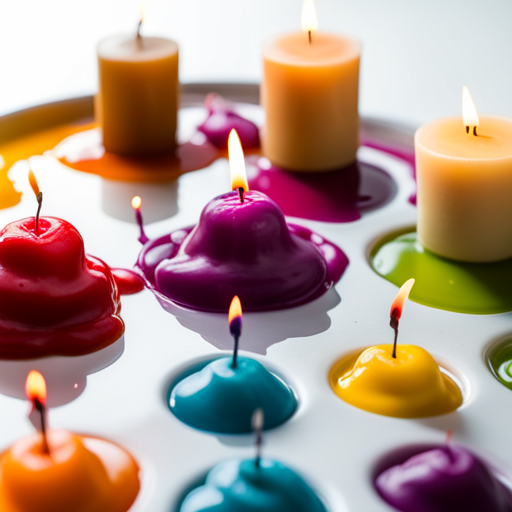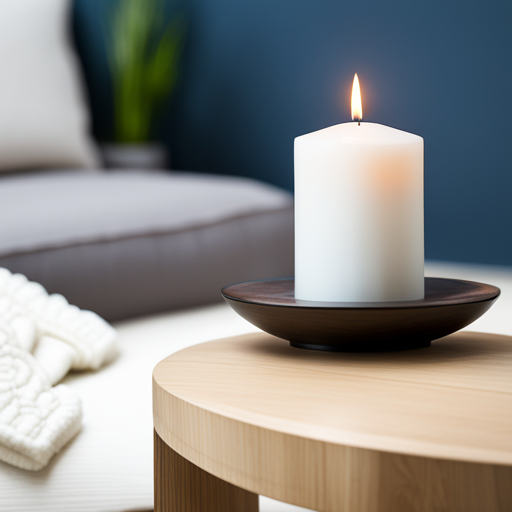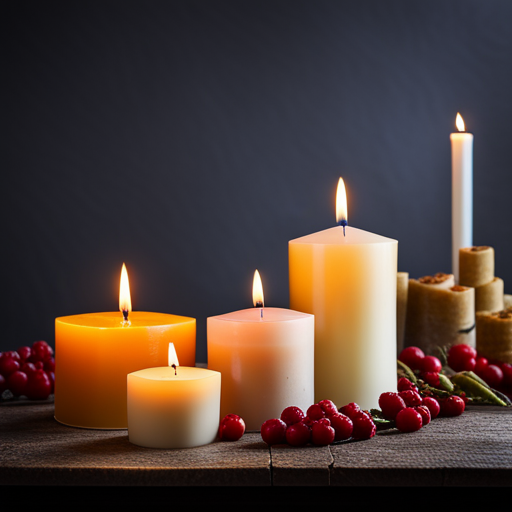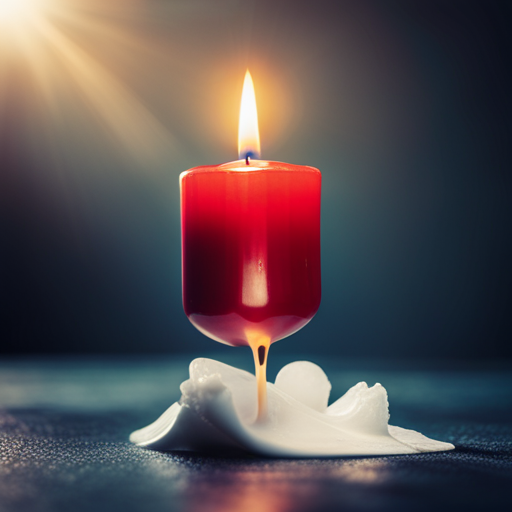The article also delves into the process of adding fragrance to the wax and recommended curing times for optimal results. With safety tips and melting techniques, knowing the melting points of candle wax becomes crucial for both safety and creating high-quality candles.
Key Takeaways
– Different types of wax have different melting points.
– Adding fragrance to wax requires specific temperatures for each type of wax.
– Melting wax at the correct temperature ensures optimal scent throw.
– Using proper melting techniques is important for safety and quality candles.
Types of Wax and Their Melting Points

https://www.youtube.com/watch?v=kgi82cd7TVU
Coconut wax has a melting point ranging from 124F-127F. It is one of the types of wax commonly used in candle-making. Unlike other waxes, such as beeswax or paraffin wax, coconut wax has a lower melting point.
This makes it easier to work with and allows for a smoother and more even burn when the candle is lit. The lower melting point of coconut wax also means that it requires less heat to melt, which can be advantageous during the candle-making process.
Additionally, coconut wax has a natural, subtle fragrance, making it a popular choice for scented candles. Overall, the melting point of coconut wax plays an important role in determining the quality and effectiveness of the candles produced.
Adding Fragrance and Curing Times

When adding fragrance to the candle wax, it is important to follow specific temperature guidelines and allow for proper curing times.
– Beeswax: Fragrance should be added at a temperature of 160-165F, and then the candle should be allowed to cure for 2 days.
– Soy Wax: Fragrance should be added at a temperature of 120-140F, and then the candle should be allowed to cure for 3-14 days.
– Paraffin Wax: Fragrance should be added at a temperature of 180F-185F, and then the candle should be allowed to cure for 1-2 days.
– Gel Wax: Fragrance should be added at a temperature of 170F for flash point fragrances, and then the candle should be allowed to cure for 1-2 days.
Melting Wax Techniques

The microwave and double boiler are two common techniques for melting wax when making candles.
The microwave method involves melting the wax in 1-2 minute intervals, stirring between intervals, and using a candle thermometer to monitor the temperature. This technique is convenient and efficient, allowing for quicker melting times.
On the other hand, the double boiler method requires filling a saucepan with two inches of water and placing a pouring pitcher with wax inside the boiling water. The temperature of the wax is monitored until it reaches its melting point, then it is removed from heat and allowed to cool before adding fragrance. This method is preferred when slow, controlled heating is desired.
Both techniques have their advantages and it ultimately depends on personal preference and the specific requirements of the candle-making process.
Safety Tips for Burning Candle Wax

To ensure a safe burning experience, it is important for candlemakers to follow these safety tips:
– Avoid exceeding 250F: Do not leave wax unattended and prevent it from reaching a temperature over 250F.
– Avoid burning wax on direct heat: Use slow, controlled heat like the double-boiler method.
– Wear safety gear: Wear goggles to protect eyes from wax splashes.
– Monitor the flame: Keep an eye on the candle while it’s burning to prevent accidents.
By following these safety tips, candlemakers can enjoy their creations without any accidents or mishaps.
It is crucial to prioritize safety to ensure a pleasant and worry-free candle burning experience.
Importance of Knowing Candle Wax Melting Points

Understanding the melting points of different types of candle wax is crucial for candlemakers to ensure safety and achieve the desired results. Different types of wax have different melting points, which determines the optimal temperature for adding fragrance and the techniques used for melting the wax. To grab the attention of the audience, here is a table showcasing the melting points of various waxes:
| Types of Wax | Melting Point |
|---|---|
| Beeswax | 144-149F |
| Soy Wax | 113-127F |
| Paraffin Wax | 115-142F |
| Gel Wax | 180F |
| Coconut Wax | 124-127F |
Knowing the melting points is important because it helps candlemakers determine the right temperature for adding fragrance, ensuring optimal scent throw. Additionally, melting the wax at the correct temperature using proper techniques prevents accidents and ensures the production of high-quality candles.
Does the Temperature of a Candle Flame Affect the Melting Point of Candle Wax?
The temperature of a candle flame plays a crucial role in the melting point of candle wax. Understanding how hot is a candle flame is essential because it directly affects the rate at which the wax melts. Higher flame temperatures can accelerate the melting process, while lower temperatures may slow it down.
Frequently Asked Questions
Can Different Types of Candle Wax Be Mixed Together to Create a Custom Melting Point?
Yes, different types of candle wax can be mixed together to create a custom melting point. This allows for more control over the melting temperature and can be useful in creating unique candle blends.
At What Temperature Does Candle Wax Become Dangerous to Handle?
Candle wax becomes dangerous to handle when it exceeds 250F. It is important to avoid leaving wax unattended and using slow, controlled heat methods to prevent accidents and ensure safety while handling.
How Does the Melting Point of Candle Wax Affect the Burning Time of a Candle?
The melting point of candle wax affects the burning time of a candle. Different waxes have different melting points, and melting the wax at the correct temperature ensures optimal burning and a longer-lasting candle.
Is It Possible to Adjust the Melting Point of a Specific Type of Wax?
Yes, it is possible to adjust the melting point of a specific type of wax. By adding certain additives, such as stearic acid or vybar, the melting point can be increased or decreased to suit specific requirements.
Are There Any Safety Precautions to Take When Melting Candle Wax in the Microwave?
When melting candle wax in the microwave, it is important to take safety precautions. These include not exceeding 250F, using slow and controlled heat, and wearing goggles to protect against wax splashes.

